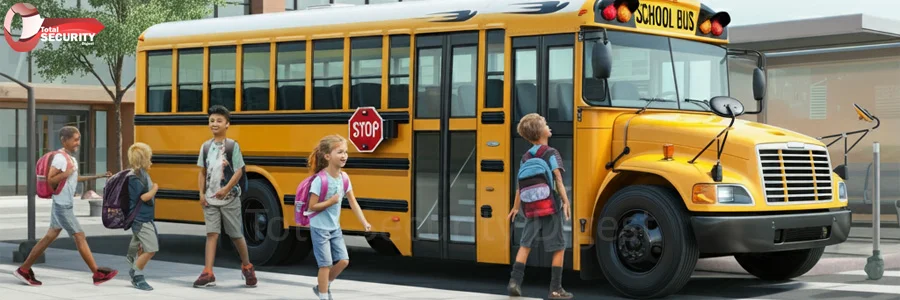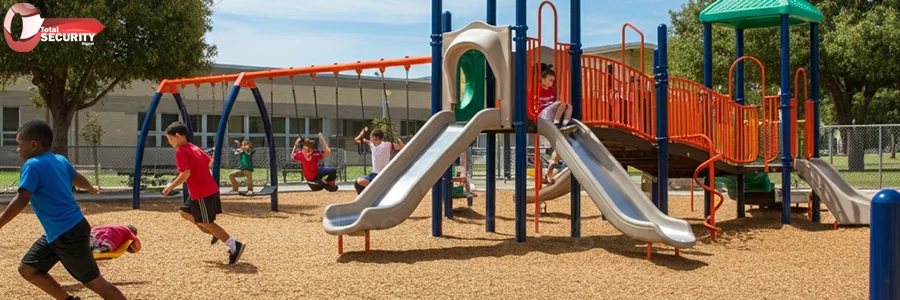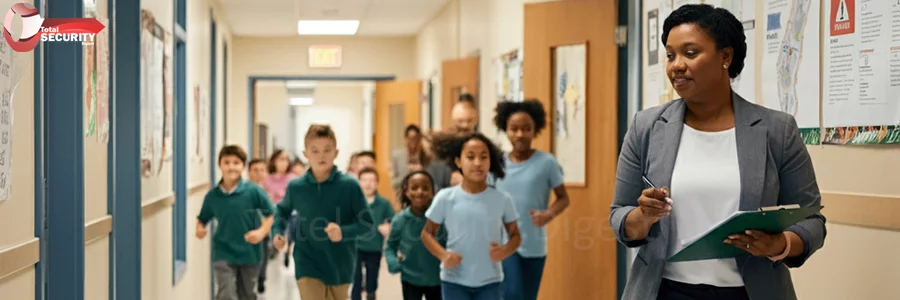Introduction
With the new academic year commencing around the globe, school safety remains a top priority for parents, teachers, and administrators alike. Creating a secure learning environment is crucial for students to thrive academically and personally. In this detailed guide, I try to discuss various aspects of school safety, providing practical tips and strategies to ensure the well-being of our children. From back-to-school safety tips to cyberbullying prevention, we’ll explore the multifaceted approach needed to maintain a safe school environment.
Importance of School Safety
School safety encompasses various strategies and practices designed to protect students, staff, and school property. It involves creating a secure environment where students can learn without fear of violence, bullying, or other threats. Ensuring school safety involves addressing both physical safety, like securing school premises, and emotional safety, such as preventing bullying and promoting mental well-being.
One of the significant challenges in school safety is balancing the need for security with the need to maintain an open and welcoming educational environment. Overly strict security measures can sometimes create a prison-like atmosphere, which might hinder learning and growth. Conversely, too lenient security protocols could increase vulnerabilities to threats like intruders or violence. Therefore, finding the right balance is crucial for creating a safe yet conducive learning environment.
Back to School Safety Tips
As students head back to school, safety tips are essential for parents, students, and school staff. These tips help everyone prepare for a safe transition back into the school routine. The American Red Cross recommends multiple safety tips that include advice on road safety, proper backpack use, and staying hydrated.
- Safety Knowledge: Children, especially younger children and those who are going to school for the first time must memorize their phone numbers, address, how to reach their parents or another responsible adult, and how to call emergency services like 911.
- Stranger awareness: Teach children about stranger danger and what to do if approached.
- Define “stranger”: Explain what constitutes a stranger.
- Establish a family code word: Use this for unexpected pick-ups.
- Teach assertiveness: Encourage children to say “no” to uncomfortable situations.
- Road Safety: Children should be taught to look both ways before crossing streets and to use crosswalks where available. For drivers, it’s crucial to be vigilant, especially in school zones and near bus stops.
- Proper Backpack Use: Overloaded backpacks can lead to back injuries. Encourage children to carry only what they need and to use both straps to distribute weight evenly.
- Hydration and Nutrition: Keeping kids hydrated and well-nourished is vital for their health and focus. Ensure they have access to water and healthy snacks throughout the day.
By following these back-to-school safety tips, parents and educators can create a safer environment for everyone involved.
School Bus Safety

For many students, school buses are the primary mode of transportation, which makes school bus safety a critical aspect of “school safety.” According to the National Highway Traffic Safety Administration (NHTSA), school buses are among the safest vehicles on the road. However, it’s still crucial to ensure safety protocols are in place for both drivers and students.
For Driver
- Yellow flashing lights indicate that the bus is preparing to stop. Slow down and be ready to stop your vehicle.
- Red flashing lights and an extended stop arm indicate that the bus has stopped and children are getting on or off. You must stop your car and wait until the bus is safe to proceed.
- Even when the lights aren’t flashing, be vigilant for children, especially around school arrival and dismissal times. Exercise caution in school zones and near bus stops.
For Students
- Stay seated seated while the bus is in motion, and avoid distracting the driver.
- Keep aisles clear of backpacks and other items.
- Wait for a complete stop before getting off.
Additionally, parents and drivers should be aware of the dangers of passing a stopped school bus. Many accidents occur when drivers fail to obey school bus stop signs.
Child Safety at School
A school’s responsibility extends far beyond academic learning. Child safety at school involves various measures to protect students from harm while on school premises. This includes preventing physical injuries, emotional harm, and exposure to hazardous situations, among other things.
- Building Maintenance: Regular inspections and prompt repairs of school facilities.
- Playground Safety: Ensuring equipment is well-maintained and age-appropriate.
- Emergency Response Plans: Having clear procedures for various emergencies.
- Regular Safety Drills: Conducting drills, like fire and earthquake drills, at regular intervals prepare students for emergencies.
- Emotional Safety: Schools need to foster an inclusive environment that discourages bullying and promotes respect and empathy among students. Implementing programs that focus on emotional intelligence can significantly reduce incidents of bullying.
Ensuring child safety at school is a shared responsibility between parents, educators, and students, requiring constant vigilance and a proactive approach. Therefore, schools should also consider implementing security measures such as visitor check-in systems and surveillance cameras to enhance overall safety.
Cyberbullying Prevention Tips
With the increased use of technology in education, cyberbullying has become a growing concern that affects students’ mental health and well-being. Educating students and parents on cyberbullying prevention is an essential component of school safety.
- Education: Schools should conduct workshops and seminars to educate students about the dangers of cyberbullying and how to handle such situations. The focus should be on online safety, digital citizenship, and responsible social media use.
- Implement Cyber Security Measures: Schools should have robust firewalls and monitoring systems.
- Parental Monitoring: Children’s online activities and social media use should never be left unchecked by parents.
- Monitoring and Reporting: Encourage students to report any instances of cyberbullying to a trusted adult. Schools should also have a clear policy on handling cyberbullying incidents.
Open communication between parents, students, and schools is crucial in preventing and addressing cyberbullying incidents.
Implementing Effective School Safety Measures
School safety measures are designed to protect students, staff, and property from various threats. These measures range from physical security enhancements to emergency preparedness and response strategies.
- Physical Security: This includes securing the school perimeter with fencing, installing surveillance cameras, and having controlled access points.
- Emergency Drills: Regular emergency drills for situations like fires, lockdowns, and natural disasters prepare students and staff to react quickly and appropriately.
- School Safety Officers: Hiring trained school safety officers can help monitor security and respond to emergencies effectively.
- Classroom Behavior: Fostering a positive and supportive classroom environment by establishing clear expectations for behavior and consistently enforcing them. Positive reinforcement techniques, such as praise and rewards, can encourage students to follow classroom rules and exhibit appropriate behavior.
- Hallway Etiquette: Promoting safety in hallways by implementing traffic flow patterns and supervising students during transitions between classes. Clear signage and markings can also help guide students and prevent accidents.
- Recess Rules: Ensuring a safe and enjoyable recess by providing age-appropriate playground equipment and supervising students during break time. Safety rules and guidelines should be clearly communicated to students, and consequences for violating these rules should be established.
Regularly reviewing and reinforcing these rules can help create a culture of safety within the school.
Playground Safety

Playground safety is another critical component of school safety. Playgrounds should be regularly inspected for hazards, and children should be supervised at all times to prevent injuries.
- Equipment Inspection: Ensure that playground equipment is safe and properly maintained. Broken or worn-out equipment should be repaired or replaced promptly.
- Supervision: Adequate supervision is crucial to ensure children play safely. Supervisors should be trained to identify and mitigate potential risks.
By focusing on playground safety, schools can prevent injuries and create a safe play environment for children.
Road Safety Near Schools

Pedestrian Safety
Pedestrian safety is crucial, especially around school zones where children are likely to cross streets. Ensuring pedestrian safety involves educating both children and drivers.
For Children
- Use Crosswalks: Teach children to use crosswalks and pedestrian signals.
- Look Both Ways: Check for traffic in all directions before crossing.
- Make Eye Contact: Children should also learn to make eye contact with drivers before crossing the street.
- Avoid Distractions: Put away phones and remove headphones while walking.
For Drivers
- Reduce Speed: Drivers should reduce speed in school zones.
- Be Vigilant: Drivers should be vigilant for children crossing streets or getting off buses.
- Obey speed limits: School zones typically have reduced speed limits.
- Watch for children: Be alert for kids who might dart into the street.
- No passing: Never pass a vehicle stopped for pedestrians.
Parents and schools can work together to identify safe routes and potentially organize walking groups for added safety. Schools can also work with local law enforcement to increase patrols during drop-off and pick-up times.
Teen Driving Safety for School
For high school students who drive to school, it’s important to emphasize safe driving practices:
- Avoid Distractions: No texting or phone use while driving.
- Follow Speed Limits: Especially in school zones.
- Be Aware of Pedestrians: Many students and teachers may be walking to school.
Schools can consider implementing parking permit programs that require students to complete a safe driving course.
Safety Tips for Walking to School
For students who walk to school, safety should be a top priority:
- Use Sidewalks: Always walk on sidewalks when available.
- Be Visible: Wear bright or reflective clothing, especially in low light conditions.
- Walk in Groups: Whenever possible, walk with friends or in a walking school bus.
Parents can help by practicing the route with their children and identifying safe places to go if help is needed.
Emergency Drills and Preparedness in Schools

Emergency drills are an essential part of school safety. They prepare students and staff for various emergencies, such as fires, earthquakes, or active shooter situations.
- Types of Drills: Schools should conduct the following drills at regular intervals. Each type of drill should have clear procedures that are practiced frequently, to ensure that students and staff are trained on how to respond effectively to each situation.
- Fire drills
- Lockdown drills
- Earthquake drills
- Active shooter drills
- Preparation and Training: School staff should receive training on how to respond to different emergencies. Regular drills help reinforce this training and ensure everyone knows their role during an emergency.
While these drills may seem disruptive, they are crucial for ensuring everyone knows how to react in an emergency. Remember, effective emergency preparedness can significantly reduce the impact of emergencies and protect lives.
Mental Health Awareness
Recognizing and addressing mental health concerns in students is an important aspect of school safety. Schools should have programs in place to support students’ mental health:
- Reduce Stigma: Encourage open discussions about mental health.
- Provide Resources: Ensure students know how to access mental health support.
- Train Staff: Equip teachers to recognize signs of mental health issues.
- Counseling Services: Provide access to trained mental health professionals.
- Stress Management Programs: Teach students coping strategies for academic and personal stress.
- Anti-Bullying Initiatives: Create a supportive, inclusive school environment.
Open communication between parents, teachers, and students is crucial in identifying and addressing mental health concerns early.
Back to School Safety Checklist
Create a checklist for parents and students to ensure all safety bases are covered:
- Update emergency contact information
- Review school safety rules
- Check backpack for proper fit and weight
- Discuss safe routes to and from school
- Review internet safety guidelines
COVID-19 School Safety Protocols
While the pandemic has eased, some safety measures may still be in place:
- Hand Hygiene: Encourage regular handwashing.
- Ventilation: Ensure classrooms are well-ventilated.
- Stay Home when Sick: Reinforce the importance of staying home when ill.
Schools should stay updated on local health guidelines and adjust protocols as needed.
School Emergency Response Plans
Every school should have a comprehensive emergency response plan with:
- Clear procedures for various types of emergencies.
- Communication protocols on how information will be shared with parents and staff.
- Regular reviews to update the plan annually and after any incidents.
National School Safety Week
Many countries observe a National School Safety Week. During this time:
- Host safety workshops for students, parents, and staff.
- Conduct safety audits to review and improve school safety measures.
- Promote awareness and share safety tips and information widely.
This annual event can help keep school safety at the forefront of everyone’s minds.
School Safety Patrol Programs
Implementing a student safety patrol can enhance overall school safety:
- Train student volunteers in basic safety procedures and leadership.
- Assign responsibilities such as helping younger students cross streets safely.
- Recognize contributions and celebrate the efforts of safety patrol members.
These programs can foster a sense of responsibility and community among students.
Cybersecurity in Schools
Protecting digital assets and student information is crucial:
- Regular updates: Keep all software and systems up-to-date.
- Staff training: Educate teachers and staff about cybersecurity best practices.
- Data protection: Implement strong policies for handling sensitive information.
Schools should work with IT professionals to ensure robust cybersecurity measures are in place.
School Safety Officer Training
For schools with safety officers, ongoing training is essential:
- De-escalation techniques: Train officers in non-violent conflict resolution.
- Emergency response: Ensure officers are prepared for various scenarios.
- Community relations: Foster positive relationships between officers and students.
Regular reviews of safety officer policies and procedures can help ensure they align with the school’s overall safety goals.
Emergency Kits for Schools
Every classroom must be equipped with an emergency kit containing:
- First aid supplies
- Flashlights and extra batteries
- Non-perishable snacks and water
- Emergency contact information
Regularly check and update these kits to ensure all supplies are current and functional.
Fire Safety in Schools
Fire prevention and response should be a key part of school safety plans:
- Regular inspections: Check fire alarms, extinguishers, and sprinkler systems.
- Clear evacuation routes: Ensure all exits are clearly marked and accessible.
- Fire drills: Conduct regular drills to familiarize everyone with evacuation procedures.
Work with local fire departments to ensure your school meets all fire safety regulations.
Bullying Prevention Programs
Implementing comprehensive bullying prevention programs can create a safer school environment.
- Clear policies: Establish and communicate anti-bullying policies.
- Intervention training: Teach staff how to effectively intervene in bullying situations.
- Student involvement: Engage students in creating a culture of kindness and respect.
Regular evaluations of these programs can help ensure their effectiveness.
School Nurse Responsibilities
School nurses play a crucial role in maintaining student health and safety:
- Health screenings: Conduct regular vision, hearing, and other health checks.
- Medication management: Safely store and administer student medications.
- Emergency response: Be prepared to handle medical emergencies.
Ensure the school nurse’s office is well-equipped and easily accessible.
Parent-Teacher Safety Meetings
Regular meetings between parents and teachers can enhance school safety:
- Share concerns: Provide a forum for discussing safety issues.
- Update policies: Review and revise safety procedures as needed.
- Encourage involvement: Engage parents in school safety initiatives.
These meetings can foster a collaborative approach to school safety.
Conclusion
School safety is a complex issue that requires ongoing attention and collaboration between schools, parents, and the community. By implementing comprehensive safety measures, from physical security to mental health support, we can create environments where students feel safe and can focus on learning. Remember, school safety is everyone’s responsibility. Stay informed, stay involved, and prioritize the well-being of our children.
Key takeaways:
- Regularly review and update school safety policies and procedures.
- Educate students on various aspects of safety, from cybersecurity to emergency preparedness.
- Foster open communication between schools, parents, and students about safety concerns.
- Implement both physical and digital security measures to protect students.
- Prioritize mental health awareness and support as part of overall school safety.
Let’s work together to create safer schools. Start by reviewing your school’s safety policies and discussing them with your children. Encourage your school to hold regular safety drills and workshops. Remember, a safe school environment is crucial for our children’s education and well-being.
FAQ
School safety includes physical security, emergency preparedness, cyberbullying prevention, and creating a supportive school environment.
Parents can contribute by educating their children on safety protocols, staying involved in school activities, and communicating with school staff about safety concerns.
Children should stay seated, avoid distracting the driver, and be aware of the “danger zone” around the bus. Drivers should always stop for buses loading or unloading children.
Schools can prevent cyberbullying by educating students, monitoring online activities, and establishing clear reporting and response procedures.
Emergency drills prepare students and staff to respond effectively to emergencies, ensuring everyone’s safety during unexpected situations.
References
- American Red Cross – Ten Safety Tips to Follow as Students Head Back to School
- National Safety Council – School Safety
- National Highway Traffic Safety Administration – Keeping Children Safe
- Scripps Health – Back to School Health and Safety Tips
- CBP – Back to School Safety Tips
- Texas Department of Transportation – Back to School
- Safe in the Seat – Back to School Safety Tips for Drivers
- Allied Universal – Top Ten School Safety Tips K-12
- Drive Different – Back to School Safety: What Drivers Need to Look Out For This Fall
Discover more from Total Security Digest
Subscribe to get the latest posts sent to your email.